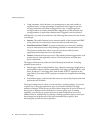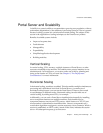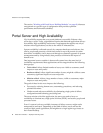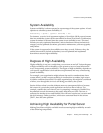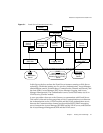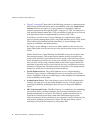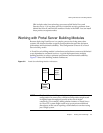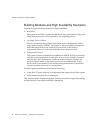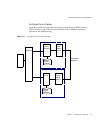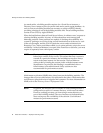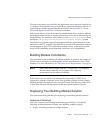Working with Portal Server Building Modules
90 Portal Server 6 2005Q1 • Deployment Planning Guide
Building Modules and High Availability Scenarios
Portal Server provides three scenarios for high availability:
• Best Effort
The system is available as long as the hardware does not fail and as long as the
Portal Server processes can be restarted by the watchdog process.
• No Single Point of Failure
The use of hardware and software replication creates a deployment with no
single point of failure (NSPOF). The system is always available, as long as no
more than one failure occurs consecutively anywhere in the chain of
components. However, in the case of failures, user sessions are lost.
• Transparent Failover
The system is always available but in addition to NSPOF, failover to a backup
instance occurs transparently to end users. In most cases, users do not notice
that they have been redirected to a different node or instance. Sessions are
preserved across nodes so that users do not have to reauthenticate. Portal
Server services are stateless or use checkpointing mechanisms to rebuild the
current execution context up to a certain point.
Possible supported architectures include the following:
• Using Sun™ Cluster software on components that support Sun Cluster agents
• Multi-master Directory Server techniques
This section explains implementing these architectures and leverages the building
module concept, from a high-availability standpoint.



